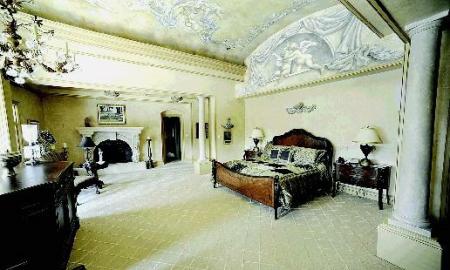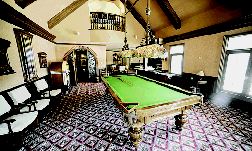Ozzie Jurock
Sun
Lots of questions in the last two weeks. I thank you and beg your indulgence. I am not directly answering any questions till the end of August. Currently I am cruising in Desolation Sound with limited access to the ‘net of the airwaves’ kind. I do have access to my ‘net of the fishing’ kind and yes …there are still salmon in ‘them thar‘ waters.
I have picked a few more commonly asked questions in this issue:
Question:
I have been told that the U.S. short sale business is booming. How can I get into that in Canada or is it only available in the U.S.?
Answer:
A short sale simply means that the lender is accepting a lower payout on the total mortgage amount that is due. If your mortgage is $200,000, but your home is worth, say, $170,000, you are $30,000 short – plus any other charges. The lender accepts the ‘short’ mortgage amount. However:
1. A lender will only accept such a ‘short sale’ if it is proven the property is worth less and he has not much hope that the homeowner will pay back to full amount.
2. Some U.S. marketers may tell you that they can negotiate with an owner in trouble, get him to agree. Fine, but that does not mean that the lender will agree.
Is it possible? Of course. Lenders all over the U.S. are likely to take less. Is it easy? No, just think through all the steps: Find a willing seller, find a willing lender, find who will sign the documents, etc.
Doing it in Canada? It probably happens from time to time, but if you ask your banker to take less on the mortgage in the generally hot Western Real Estate market he would have a good laugh.
Question:
I have a property that I would like to sell in…. Do you have any products or services that will assist me in achieving this?
Answer:
While we have advertising opportunities on our website (banner advertising), we are not a real estate company. Your best bet is to hire a professional realtor that handles your special property marketing needs.
Question:
This mortgage question has been asked in similar veins: We just used our primary residence and an investment property to finance the purchase of another home which we intend to live in. We took out two 40-year variable rate mortgages to make it happen but am now wondering if this was a smart move or not. Did we make a mistake?
Answer:
What is done is done. I do not think that taking out 40-year mortgages is a mistake, my preference however is to take a mortgage for investment purposes over a much shorter time. The sooner an investment property gets into real cash flow the better. You may however have another problem. By turning your current home into an investment property you will have to pay a proportion of your gain as capital gain when you sell. Best to see your accountant…and remember your past in no way determines your future.
Question:
We have purchased nine pre-sales. The completion dates are spread out from mid ’09 – mid 2011. Should we be trying to assign one or more of these soon, or should we hold tight and not panic? As long as rental vacancies stay low, we will probably be okay if we don’t sell. All the talk about the downturn is scaring me! Any advice or reassurance you can give would be much appreciated.
Answer:
Sorry. Can’t reassure. No one has a crystal ball and Vancouver‘s condo market’s ball is particularly cloudy. I do not know which buildings you bought in, who was the developer, nor do I know what you paid for them. It is the deal that you made, not the market that will hold you safe. You always make the most money on the day you buy. Assuming you bought them this year, you likely bought at the peak of the market, but perhaps with nine units you received a wonderful low price? Sales of new condos are sharply lower in this June (down 62 per cent) and the sales success ratio dropped from 70 per cent to 34 per cent. At the same time assignments (people trying to sell pre-sales) on Craigslist.com on July 7 stood at 410. If you have a quality developer and you bought good buildings in good areas and you bought for rental purposes you will be fine after the downturn. If you bought to flip at a profit, that profit will not be easy to achieve.
Question:
We own a two-bedroom condo which we can sell for $230,000 on the East side. We would like to buy a $500,000 house in Port Moody because our family is growing. With the changing market, we are thinking of selling, rent for a while and buy the house next year. How long do you think the downturn will last and when can we buy at a lower price?
Answer:
That is one of the most asked questions. I am always tempted to say that I have the answer: The market will go down 17.2 per cent until February 2009 and then rise after 2 p.m. But I understand the question. With the crazy price appreciation we have had, everyone longs to get back to lower prices. I received this question also in 2005 and 2004 and people that sold then saw their prices double after they sold. Actually when you buy and sell in a down market you can often be better off. Let’s assume that prices go down by 10 per cent. You would then only get $207,000 for your suite. The house in Port Moody would also fall by 10 per cent and could then be bought for only $450,000. You would be $27,000 ahead.
Question:
This last item is a summary of a dozen versions of questions. How long will the downturn last? Will the Olympics make any difference on prices? How long have previous downturns lasted? Is this a crash like in the U.S.?
Answer:
In three previous downturns we saw markets slow for one to three years and drop in price between 5 per cent and 17 per cent from the high achieved. For instance, in April 1995 the average price clocked in at $348,000 and by 1998 it had dropped to $278,000. The Olympics have been a boon to construction, a boon to transportation and investment, but -in our view- will have little additional impact on prices (other than rental prices for a two-week period). The ‘U.S. crash’ is not country wide. Out of 150 major markets, some 72 are still rising in value. Between 1988 and 1992 prices in San Diego dropped 35 per cent -since then they rose by 410 per cent. Is it a surprise that prices there have reversed? The top locations in the U.S. – like San Diego will recover again, once the excess inventories are cleared out and the foolish lending practices are stopped. Vancouver‘s real estate market today comes after a 10 year run-up from $278,000 to $880,000 on average. Did we really expect it to rise forever?
We may have a downturn, clear out our own overbuilding in places and yes, we may see a lowering of prices. Markets become the stories people tell about them and today the nay-sayers are out in force and negative stories about Vancouver, Calgary and Edmonton abound.
But whatever the short term outcome this is still paradise – the whole world wants to be here. Living in Western Canada is being close to being in heaven on earth. The environment is majestic, the climate outstanding, the views spectacular. There is a very special flavour here. In Alberta call it the crisp mountain air, the sweeping wide open spaces, in B.C. call it the pert ocean spray, balmy sunsets, beach-roses in February and asters in October. There is a Western Canadian flavour. A flavour unlike any other.
This is the best place in the world to be….and that means that our real estate prices will always be higher than elsewhere…eventually.
– – –
Ozzie Jurock F.R.I.
Jurock’s Real Estate Insider
web: www.jurock.com
email: [email protected]

















